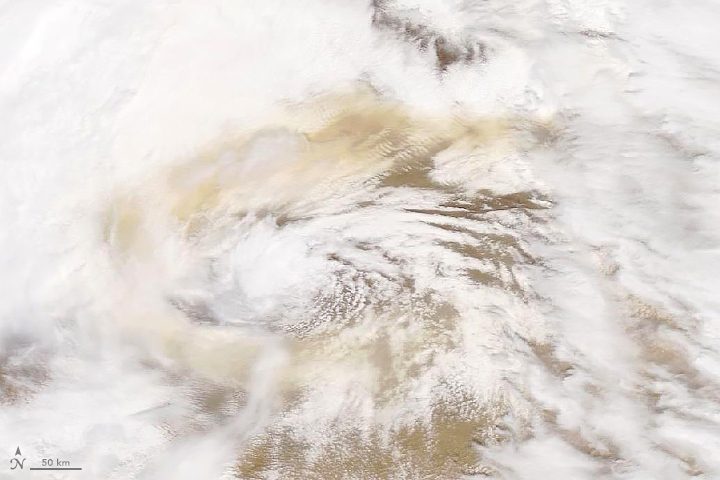


In Asia, spring is dust season. Strong northwesterly winds rake the Taklamakan and Gobi deserts in March and April, lifting mineral dust particles from the planetary boundary layer near the surface and into the free troposphere. Near the ground, variations in the landscape create enough friction to constrain and slow winds and the spread of dust. Higher up, unchecked winds blow faster and are capable of transporting dust farther.
In this natural-color satellite image, the dust swirling over clouds from a low-pressure storm system was catching a ride on these higher-level winds. The Moderate Resolution Imaging Spectroradiometer (MODIS) on the Terra satellite acquired the image on May 12, 2019. While the dust plume was less visible in natural-color MODIS imagery one day later, it showed up clearly in aerosol data collected by the Ozone Mapping Profiler Suite (OMPS) on the Suomi NPP satellite. By May 14, the dust had blown east toward northeastern China and the Sea of Okhotsk.
According to recent estimates, deserts in Asia produce about 10 percent of the dust emitted in the Northern Hemisphere. (About 65 percent comes from the Sahara Desert and 25 percent from the Middle East.) When dust from Asia reaches the free troposphere, it often crosses into the Arctic and North America, and occasionally circles the globe. According to one study based on NASA satellite data, dust from the Taklamakan desert is particularly prone to making the trans-Pacific journey because it has fine particles that get lofted higher than dust from the Gobi desert.
Aerosols that get lifted above clouds are of particular interest to atmospheric scientists. A growing body of research suggests that dark-colored aerosols—which absorb light—can have different effects on the climate based on whether they are found above clouds or in clear skies. When skies are clear, absorbing aerosols generally provide a sort of shade, leading to cooling. When dust or smoke floats above a cloud layer, the effect reverses: particles that would have had a cooling effect instead warm the atmosphere.
NASA Earth Observatory images by Lauren Dauphin, using MODIS data from NASA EOSDIS/LANCE and GIBS/Worldview. Story by Adam Voiland.